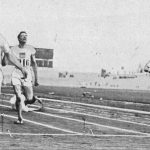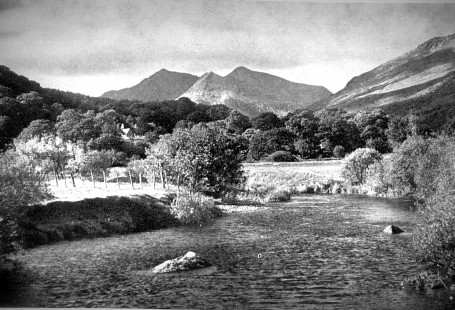This week at The Archive we have added 96,924 new pages, covering 140 years of headlines from across the United Kingdom and Ireland, and beyond. Furthermore, we are delighted to welcome a brand new title to our collection – Nottinghamshire’s Newark Herald – as well as introducing updates to 49 of our existing titles.
So read on to find out more about the Newark Herald and the other additions we have made, as well as to learn about the Polish war graves of Newark Cemetery.
Register now and explore the Archive
First published in the historic Nottinghamshire market town of Newark-on-Trent in 1872, the Newark Herald appeared every Saturday priced at one penny. With its full name of the Newark Herald, Nottinghamshire, Lincolnshire and Midland Counties’ Advertiser it circulated in ‘Newark and District.’
Politically Liberal, the Newark Herald contained news from near and far, with columns devoted to ‘Foreign Affairs’ and ‘Local and District News.’ Such items of local news included the latest from the Newark County Sessions, the police courts, as well as the Worksop Petty Sessions. Also contained within its pages were railway timetables, and notices of births, marriages and deaths.
Newark Herald | 10 February 1900
In addition to welcoming the Newark Herald to our collection this week, we have updated 49 of our existing titles, from Arbroath to Alston, from Barrhead to Birmingham, from Leicester to Lowestoft, from Southport to Swindon, from Waterford to Warrington.
We have also added new pages to one of our international titles, the Indian Daily News, which was published in what is now Kolkata. Meanwhile, you will also find updates this week to some of our special interest titles – like sporting title The Referee, women’s title the Lady’s Own Paper, and specialist shipping title Lloyd’s List.
Meanwhile, we have also added nearly 20,000 new pages to early London title Patriot, which appeared every Wednesday priced at seven pence.
The Polish War Graves of Newark Cemetery
During the Second World War, the area around Newark-on-Trent was home to several Royal Air Force Stations, which were home to Polish as well as British airmen. And so, the graveyard at Newark Cemetery became home to the remains of those Polish airmen who lost their lives fighting for their country.
Polish airmen at an English air base | The Sphere | 3 February 1940
The Newark Herald gives us a unique perspective on the sacrifice made by the Polish airmen, and how its local cemetery became a permanent memorial for them. It was in July 1941 that an area of Newark Cemetery was dedicated in memory of the fallen Polish servicemen, who had belonged to the nearby air bases. The Newark Herald, eighty years ago this week, reports on the ceremony as follows:
One could not be deeply moved and greatly impressed by the ceremony of dedication of the memorial cross in the Newark Cemetery to Polish airmen who have made the supreme sacrifice. Ignorance of the language was no ban to an appreciation of the ceremony’s significance. Here truly in Newark’s God’s Acre was a plot of land which to many Polish families will be forever Poland.
General Sikorski honours a promoted Polish airman | Illustrated London News | 26 July 1941
Jointly unveiling the memorial cross were General Sikorski, head of Poland’s armed forces and wartime Prime Minister, and Władysław Raczkiewicz, ex President of Poland, and first President of the Polish government-in-exile. And just two years later, General Sikorski was laid to rest at the foot of the memorial cross, after he had been tragically killed in aircraft crash in Gibraltar.
The Newark Herald on 17 July 1943 describes the scene in the town on the day of Sikorski’s funeral:
Newark turned out yesterday morning to add its silent tribute to the memory of Poland’s Commander-in-Chief. It was known that Requiem Mass would be celebrated in Parliament Street Catholic Church at eleven o’clock, but long before this time people gathered in the streets in the vicinity and London Road, the route by which the funeral cortege would pass. The route was kept by members of the Special Constabulary.
Belfast-News Letter | 6 July 1943
Also present at the funeral were ‘several contingents of Polish airmen, many carrying lovely wreaths all in the Polish colours, tied with wide silk ribbons of red with inscriptions in large silver lettering.’ Indeed, wreaths from ‘all the United Nations’ were placed around Sikorski’s coffin, alongside all of the fallen General’s decorations, which were more than ‘fifty in number’ and included the White Eagle of Poland, the Grand Cross of the British Empire, the Legion of Honour and the Mexican Eagle, ‘awarded to him only a month before his death.’
And at the memorial cross in Newark Cemetery there were a ‘further 200 wreaths,’ with ‘floral tributes’ from Prime Minister Winston Churchill, Foreign Secretary Anthony Eden and the Duchess of Kent, who had lost her husband just a year before when his plane had crashed whilst he was on active service. Meanwhile of ‘especial significance was a wreath from the underground organisations in Poland.’
General Sikorksi’s Requiem Mass at Westminster Cathedral | The Sphere | 24 July 1943
General Sikorski was then laid to rest in a brick-lined vault ‘in front of the memorial Cross dedicated to the memory of the men of the Polish Air Force who have lost their lives while serving their country.’
The memorial cross at Newark Cemetery would become a place of pilgrimage and remembrance for Poles visiting Britain, as the Newark Herald related in February 1944:
A number of young Polish Air Force apprentices on Sunday visited the Polish Cemetery for a service in memory of the late General Sikorski. They carried wreaths decorated with the Polish National Colours which were placed on the grave of the late Prime Minister.
General Sikorski was ‘now surrounded by 350 of his fallen airmen,’ and Squadron Leader the Reverend F. Kachi told the young apprentices how it was now their duty ‘to carry on the work.’
Three years later, and two years after the end of the Second World War, the Newark Herald was reporting how:
Another honoured son of Poland has found his last resting place amid many of his compatriots in the hallowed spot in Newark Cemetery set aside for Polish Airmen and members of other services who died in this country during the war.
Władysław Raczkiewicz inspects Polish troops in Scotland | The Scotsman | 9 November 1940
This was ex-president Władysław Raczkiewicz, who had dedicated the memorial alongside General Sikorski and had died at Ruthin Castle Nursing Home. His funeral was just as impressive as his compatriot’s:
The mortal remains were conveyed to Newark on Wednesday when the coffin draped in the Polish flag was taken into Holy Trinity Church where it rested until the funeral service on Thursday. Covering almost the whole length of the coffin was a large cluster of exquisite red and white carnations from the ex President’s widow, while on either side were masses of choice blooms.
In attendance at the funeral were many Polish servicemen:
Noticeable among the Military present was a detachment of Polish Paratroopers who fought at Arnhem. They made a very smart guard of honour and formed up opposite the church where they were inspected by General Anders.
Meanwhile, representatives from the three Polish Services took part in the ceremony, and:
Military honours were rendered by a detachment of the Polish Resettlement Corps, representing all branches of the former Polish armed forces in the U.K., who were supplied with arms for the occasion by the War Office.
The Polish Memorial at Northolt | Illustrated London News | 2 October 1948
In all, 397 Polish servicemen found their final resting places at Newark Cemetery, which became integral to Poland’s act of remembrance once the war had ended. Indeed, the Newark Herald in November 1948 describes the scene at Newark Cemetery, which marked Poland’s National Day of Remembrance:
Relatives of the fallen members of the Polish Air Force, including many women and children, from camps at Melton Mowbray and Dunholme Lodge, Lincolnshire, walked in procession from the gates to that part of the cemetery where the Polish Memorial rises above the neat rows of plain wooden crosses.
The Newark Herald went on to give this vivid description of the intensely moving scene:
Fresh flowers lay on the graves, and tiny candles flickered in the light breeze of a dull November afternoon. Relatives knelt among the graves on turf soaked by the morning’s heavy rain, as Father M. Kotowski, Air Force chaplain, recited prayers in Latin, and turned to Polish to deliver an oration on the glorious history of his country.
New Titles
Title |
Years Covered |
| Newark Herald | 1873-1949 |
Updated Titles
This week we have updated forty nine of our existing titles.
You can learn more about each of the titles we add to every week by clicking on their names. On each paper’s title page, you can read a FREE sample issue, learn more about our current holdings, and our plans for digitisation.
You can keep up to date with all the latest additions by visiting the recently added page. You can even look ahead to see what we’re going to add tomorrow.













